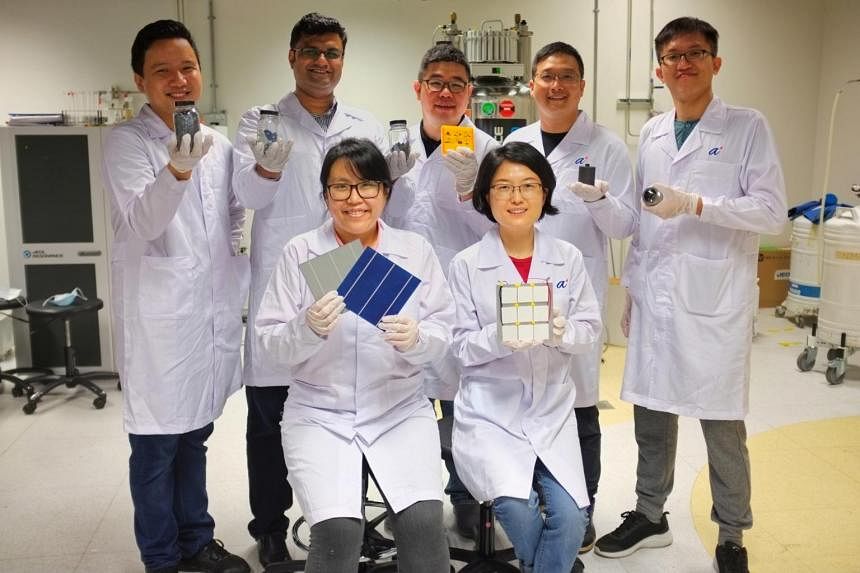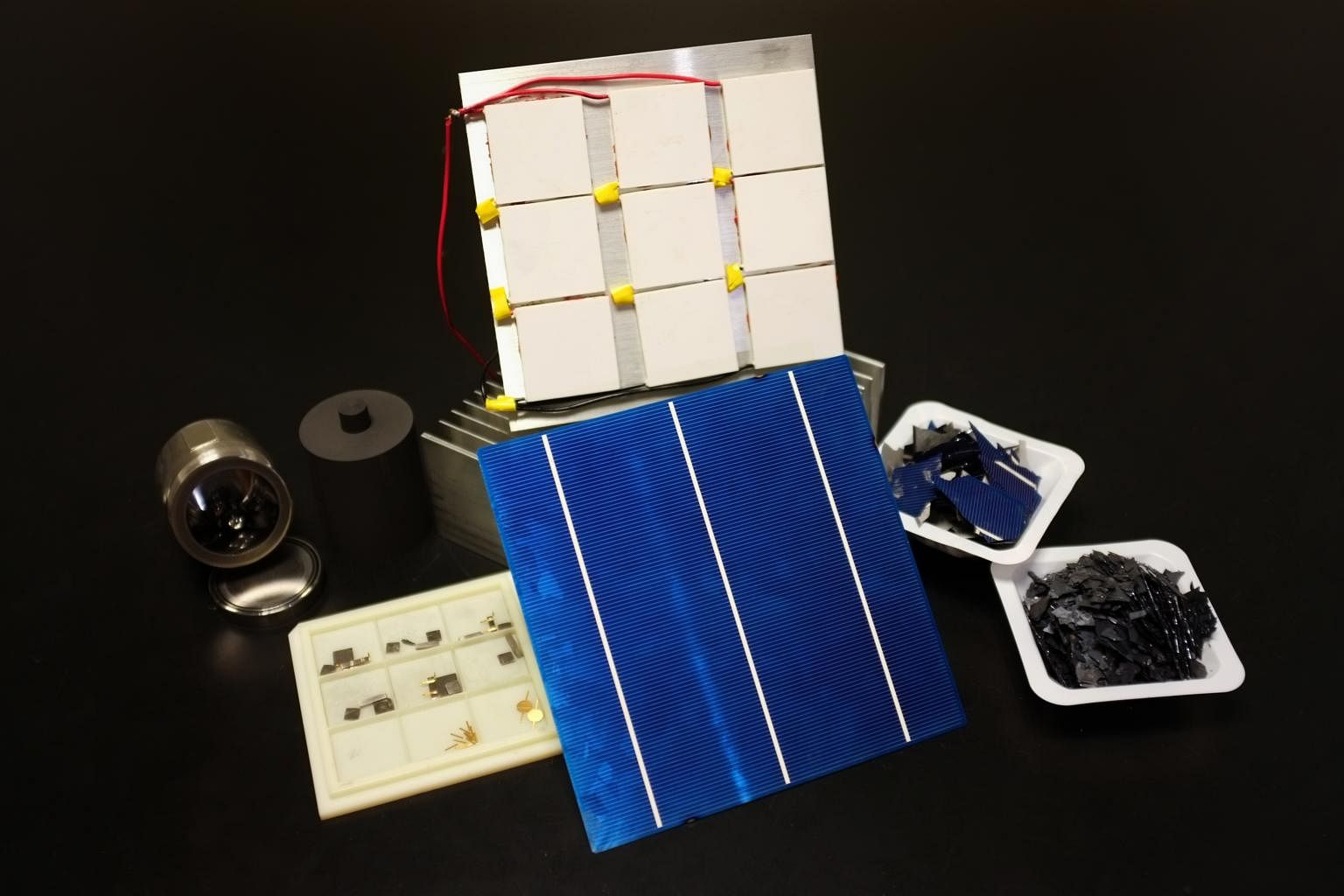
Recycling old solar panels is challenging, but scientists from Singapore have found a way to upcycle the silicon inside and turn them into materials that can convert heat into electricity.
The team comprising researchers from the Agency for Science, Technology and Research (A*Star) and Nanyang Technological University (NTU) turned old solar panels into thermoelectric materials.
Such materials convert heat into electricity, and work in a similar way to how hydropower generation plants use water movement to drive turbines to generate electricity.
The joint study was published in the scientific journal Advanced Materials in March.
Dr Ady Suwardi, the deputy head of the soft materials research department at A*Star’s Institute of Materials Research and Engineering said that by moving heat from one side to another, thermoelectric materials generate electricity.
This can then be used for applications like cooling, added Dr Ady, who co-led the study.
The team found that impurities and defects in the silicon used to make solar cells actually enhance the performance of thermoelectric materials.
A solar panel is made up of many solar cells, also known as photovoltaic cells.
Separating the materials used to make solar panels and recycling each of them is a complex and costly process, said Associate Professor Nripan Mathews.

Prof Mathews, who is the cluster director of renewables and low-carbon generation (solar) at the Energy Research Institute @NTU (ERI@N), added that current recycling methods are able to recover only the glass and metallic support structures from solar panels.
Solar cells contain a complex mix of materials such as aluminium, copper, silver, lead, plastic and silicon.
Silicon, which is extremely pure, makes up 90 per cent of solar cells. However, this normally ends up in landfills.
This is because silicon has to be chemically treated and remelted to be recycled into pure silicon, said Prof Mathews.
He added that it is challenging, energy-intensive and expensive to recover the silicon to create new, functional solar cells.
“While silicon holds very little weight in the entire solar panel, it is the most valuable part of it, which explains why it is important for us to try and upcycle it,” said Prof Mathews.

The team is currently looking to pilot the technology for large-scale upcycling of waste silicon to create silicon-based thermoelectrics.
This can be used for high-temperature energy harvesting applications such as converting heat generated from industrial waste processes into electricity.
There are a number of research efforts ongoing in Singapore to see how solar panels can be recycled.
The NTU project, for example, is one of two currently supported by the National Environment Agency’s (NEA) Closing the Waste Loop funding initiative.
The $45 million initiative was launched in 2017 to boost research and development in areas such as the recovery of materials from waste streams.
The other project, a recycling programme led by Singapore Polytechnic (SP), aims to recycle solar panels on a commercial scale and recover more than 90 per cent by weight of the materials from the solar panels, said NEA.
In 2019, The Straits Times reported that Sembcorp and SP will also work together to develop a pilot recycling plant for solar panels.
However, the institutions declined to comment when asked for updates on the effort.
Another research effort by NTU spin-off EtaVolt, a solar tech firm, is working with the university on various other solar recycling projects, said its co-founder and chief executive Stanley Wang.
The project is not funded by NEA’s Closing the Waste Loop initiative.
Dr Wang said that the upcoming projects aim to recover materials from decommissioned solar panels so they can be recycled and reutilised as raw materials for battery, solar panel manufacturing and other industrial applications.
“This would allow us to recover the end-of-life value of these raw materials, which can potentially be given back to companies in the form of rebates to incentivise them to recycle their solar panels sustainably,” he added.
Source The Straits Times


